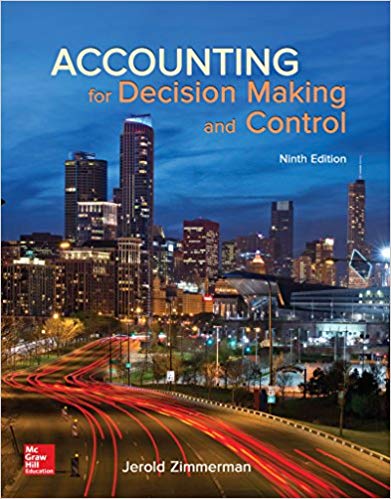The Lancaster Chamber Orchestra is a small community orchestra that offers two distinct concert series for its
Question:
Since programming needs change from concert to concert, musicians are hired on a per-service basis. (A service is either a rehearsal or a concert.) They are paid at differential average rates due to instrumental doubling requirements and also due to solo pay for woodwinds, percussion, and brass players. After the budget has been set, variances in musician costs are the result of changes in programming and rehearsal scheduling. Programming changes can cause different numbers of musicians to be needed for a particular series of rehearsals and concerts or can change the doubling requirements. Changes in rehearsal scheduling can alter needs for certain families of instruments at some rehearsals. For example, one Series A concert usually consists of six services, but not all instruments are required at each service. Programming and rehearsal scheduling are decided by the music director, Maestro Fritz Junger, but musician cost constraints are imposed by the director of production, Candice Wrightway. Budgeted and actual musician costs for the 2016-2017 season follow.
LANCASTER CHAMBER ORCHESTRA
Musicians' Budget
2016-2017
-1.png)
When the budget was prepared at the beginning of the year, Alan Voit, director of marketing, admitted that projected ticket sales for the two series were optimistic, but he believed that his innovative advertising campaign would help the orchestra meet its goal. Although pops sales came in almost exactly on target, a devastating ice storm caused the cancellation of one of the classical concerts. Unfortunately, rehearsals had already been held and the musicians had been paid for their services. Series sales figures for the three levels of ticket prices follow.
LANCASTER CHAMBER ORCHESTRA
Revenue Budget
2016-2017
-2.png)
As with any orchestra, ticket sales alone are never enough to totally cover expenses, so the director of development, Lydia Givme, is responsible for the coordination of fundraising in the community. Unfortunately, the goals set at the beginning of the year did not anticipate an extended recession, with potential private, corporate, and government contributors tightening their fiscal belts.
Additional expenses include a long-term rental agreement for the hall, a permanent conductor, guest artists, music rental and advertising costs, and variable production costs based on total services. Music rental and advertising are treated as fixed expenses even though their cost may vary during the course of the season. Here are budgeted fixed and variable expenses for 2016-2017.
LANCASTER CHAMBER ORCHESTRA
Budgeted Fixed and Variable Expenses
2016-2017
-3.png)
The income statement for 2016-2017 follows.
LANCASTER CHAMBER ORCHESTRA
Income Statement
2016-2017
-4.png)
Required:
a. Calculate a flexible budget for the Lancaster Chamber Orchestra's 2016-2017 season.
b. After calculating the flexible budget, Randall Nobucs, director of finance, found a total unfavorable variance in net income of $53,158. Account for this unfavorable variance by calculating the following:
(1) Revenue variances
(2) Labor efficiency variances
(3) Overhead efficiency and overhead spending variances
c. Nobucs is concerned that if the orchestra faces similar problems in the next season, the accumulated deficit will cause bankruptcy. He argues with Alan Voit that a 15 percent increase in ticket prices would ensure a balanced budget for the 2016-2017 season. Discuss the feasibility of this strategy.
d. In examining the income statement, CEO Peter Morris is puzzled. He believes that all of his senior staff members are superb and is not sure where to lay the blame for the orchestra's dismal financial performance. Discuss the areas of specialized knowledge involved in the operation. Which person should be held accountable for each variance?
Step by Step Answer:

Accounting for Decision Making and Control
ISBN: 978-1259564550
9th edition
Authors: Jerold Zimmerman





